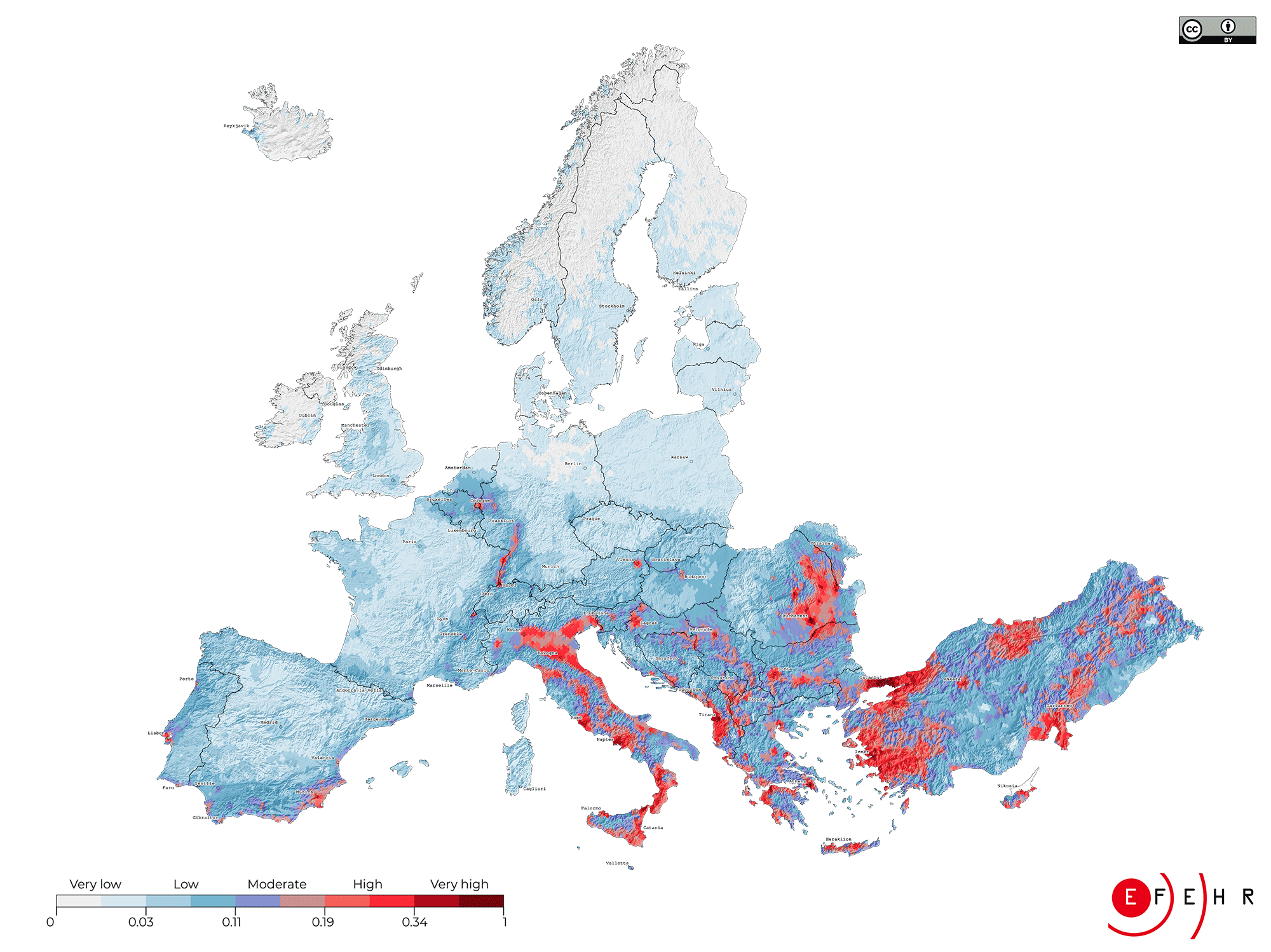The study questions if nuclear physics can enhance the prediction of earthquakes. That is the aim of the European research project artEmis, in which the GSI Helmholtzzentrum für Schwerionenforschung is taking part alongside twelve other institutes.

Risk for Earthquakes in Europe. Image Credit: GSI Helmholtzzentrum für Schwerionenforschung
Inside the framework of artEmis, which is assisted by an EU grant (Euratom) of two million euros until 2027, the basis for a trustworthy early warning system for earthquakes is to be placed. A network of sensors quantifying radon levels and other parameters in chosen water sources in Europe may be able to detect earthquakes several days ahead.
Since the 1960s, earthquakes have been predicted by quantifying radon gas, which leaks from microcracks in the bedrock as a result of the movements in the Earth’s crust.
But is has become increasingly clear that the radon level measured in the air or soil can be influenced by temperature fluctuations and air humidity, so instead we’re measuring the values in the groundwater.
Dr. Ayse Ataç Nyberg, Study Lead and Professor, KTH Royal Institute of Technology
In the project, GSI is playing an important role in the realization of sensing and analytics. Having been built on particle and radiation detectors, signal processing electronics, and data processing systems utilized for nuclear physics experiments at GSI facilities, the GSI research group taking part is coming up with the sensor units for artEmis.
Besides radon detectors, the units will include sensors for pressure, temperature, conductivity, and also other physical parameters. By making use of artificial intelligence (AI) methods, which also arise from basic research at GSI, the sensor units could be operated independently.
Dr. Jürgen Gerl is accountable for the sensor units in the artEmis project with his group.
We are pleased to make an important contribution to the practical realization of an early warning system for earthquakes by applying detection systems and methods from our basic research.
Dr. Jürgen Gerl, Scientist, GSI Helmholtzzentrum für Schwerionenforschung
As an initial step, measurements will be performed on fault lines in Italy, Greece, and Switzerland. Via the research stations in such countries, the team has entry to groundwater sources where sensor units could be positioned.
Hundreds of such units, distributed throughout the earthquake-prone areas, each develop a network. Sophisticated analysis of the network data is executed with the help of AI and machine learning. Here, the goal is to link variations in local radon concentration to seismic activity and exclude other causes (false alarms).
Source: https://www.gsi.de/start/aktuelles